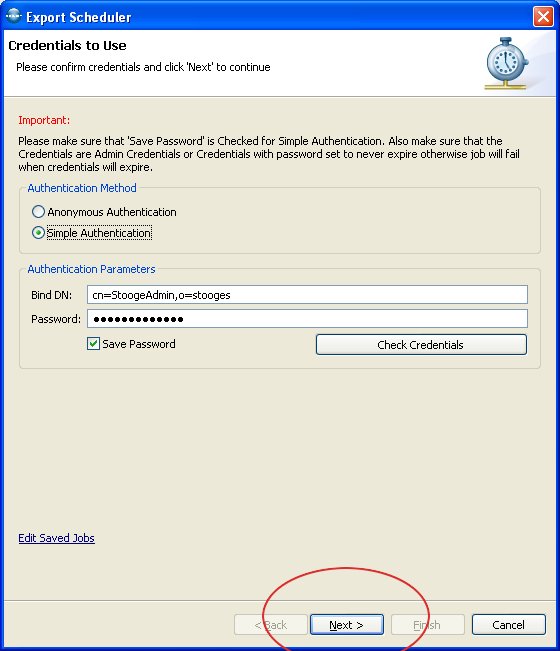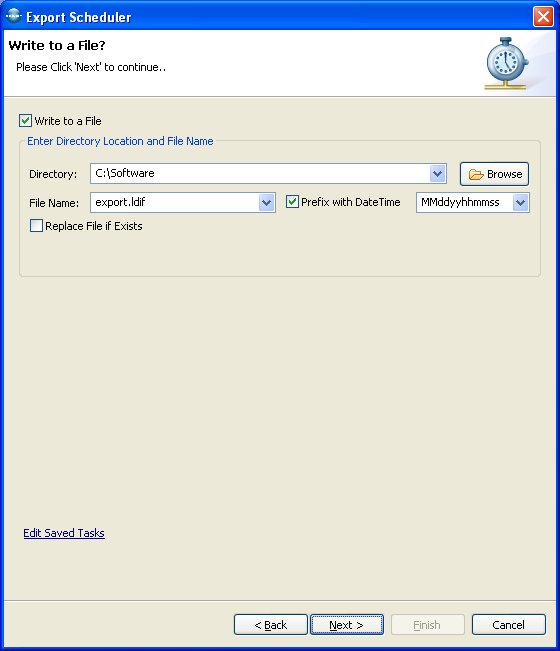This tutorial explains how to schedule a LDAP export to LDIF using LDAP Admin Tool; To export data first connect to the directory server (To create a new connection please see Connecting to a LDAP Server using LDAP Admin Tool)
After successful connection, select the entry you want to export and select “LDIF Export” from the right click context menu, an export connection dialog opens.
Enter all the fields and Click 'Finish' (Click here for Ldif Export tutorial)- Now look at the export file and if you are satisfied with the results, select LDIF Export' again from the right click context menu, same ldif export dialog will open. This time select the 'Schedule this LDIF Export' Button.

If you are using Simple Authentication, make sure that the save password box is checked and the credentials are admin credentials or credentials with password set to never expire otherwise task will fail when the credentials will expire. Click Next to continue.

If you want scheduler to write to a file, check the 'Write to a file' button and provide the file name and file name prefix date time format. Make sure you check the 'Replace File if exists' if you are using simple date time format like (mmddyy) and plan to run this task more than once a day. Click Next to continue.
 |
|
Check the 'Send Email' box if you want to send email after the scheduled process is over and/ or want to send file as an attachment. Enter the necessary information and Click Next
 |
|
Enter a unique name for this task, select the text after header from the text box, open a command/terminal window, paste the text and click enter. Once you are satisfied with the results, create a scheduler task using windows scheduler or Linux cron. Click Finish to save this task.
 |
|
See Also:
How to schedule task using Windows scheduler
How to schedule task using Linux cron
How to schedule LDAP Export to Excel
How to schedule LDAP Export to CSV
